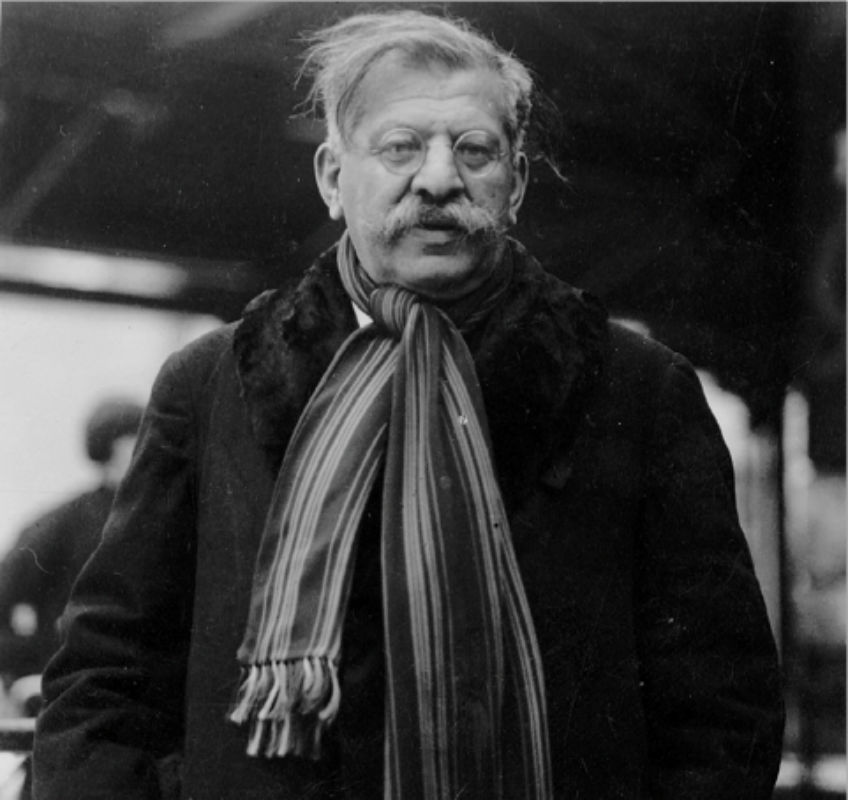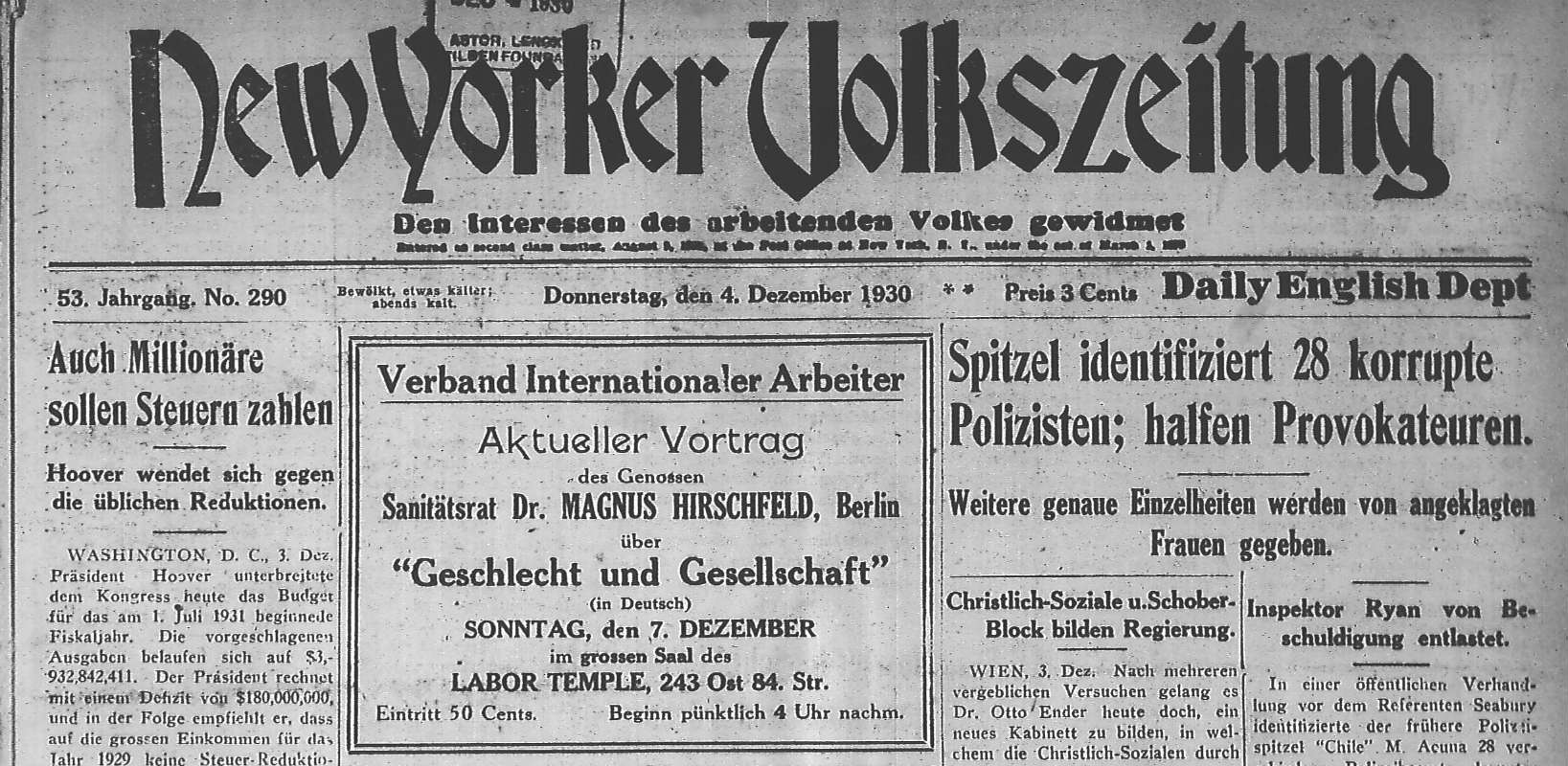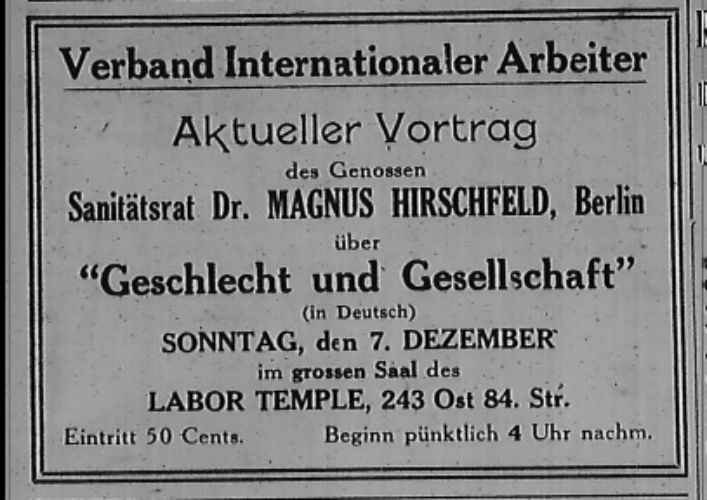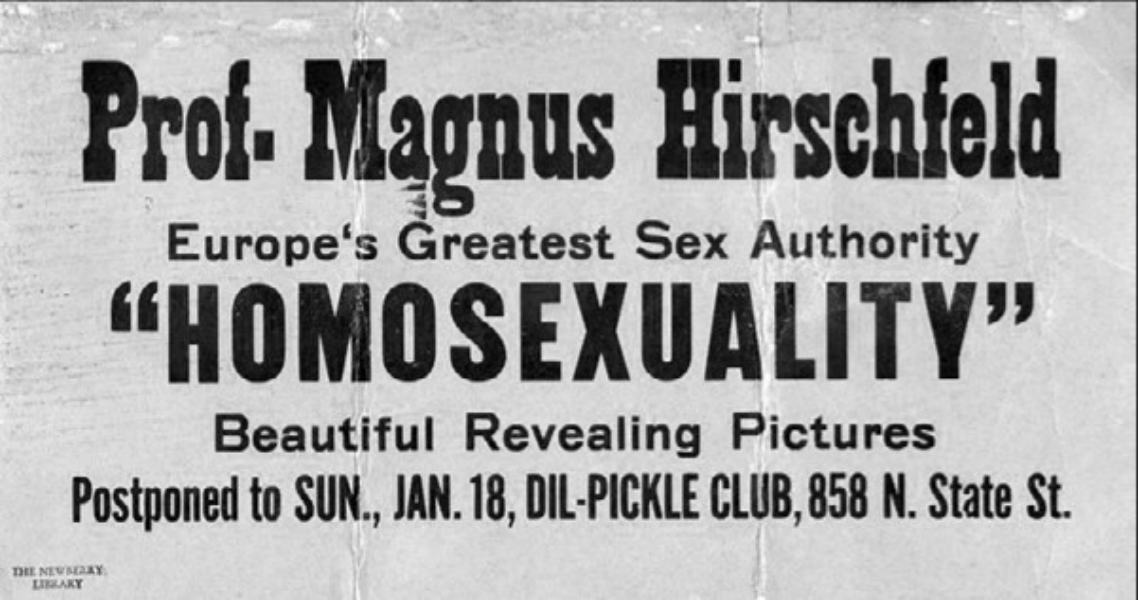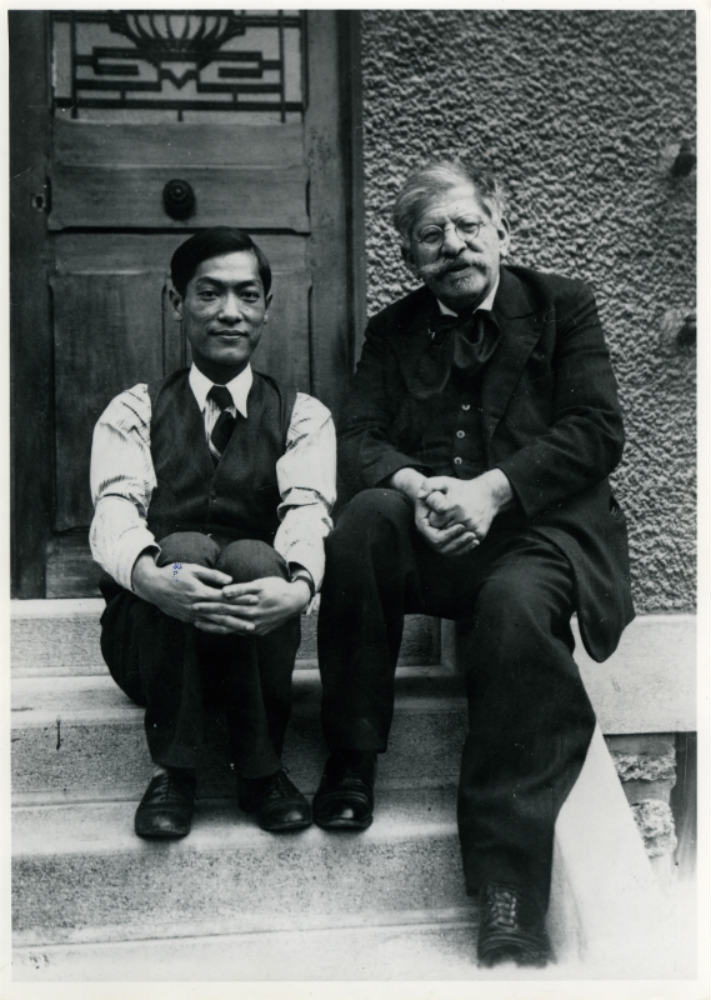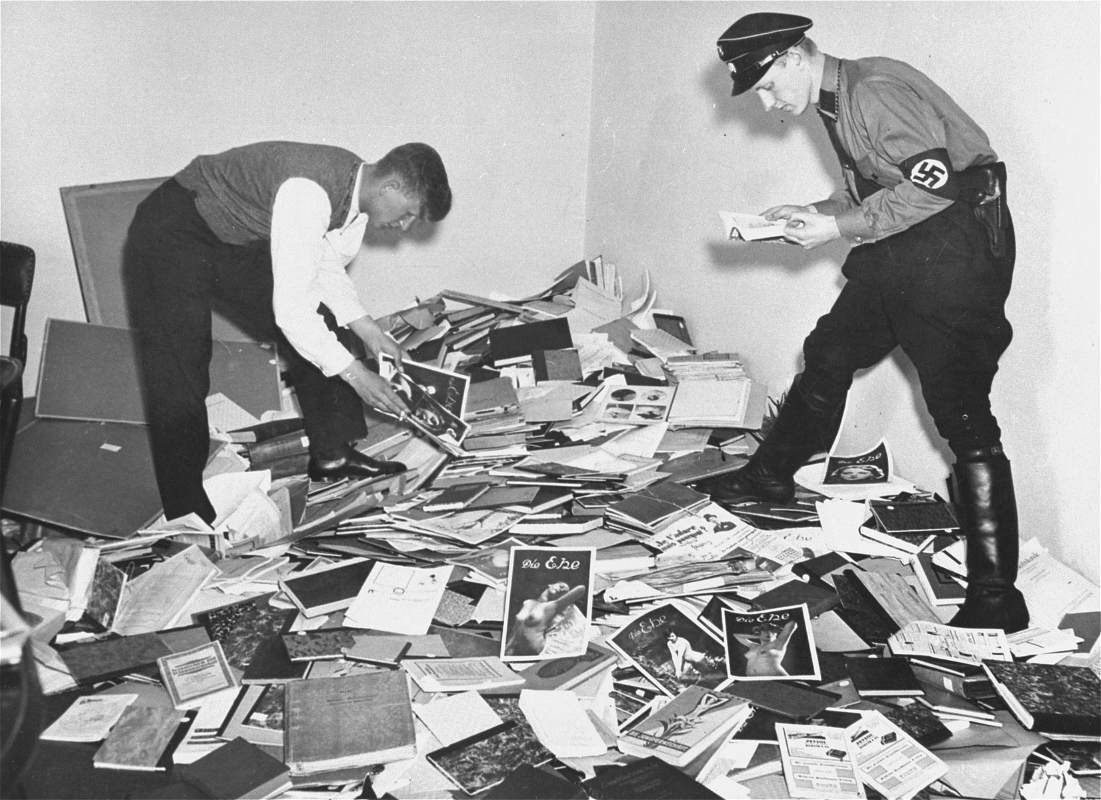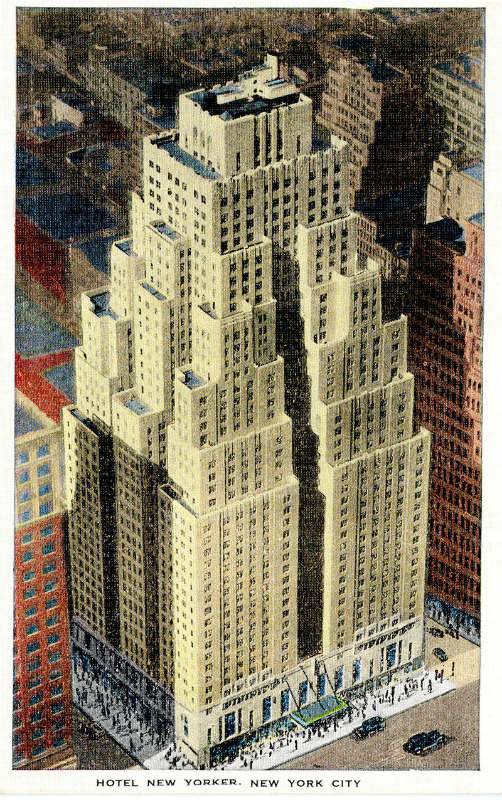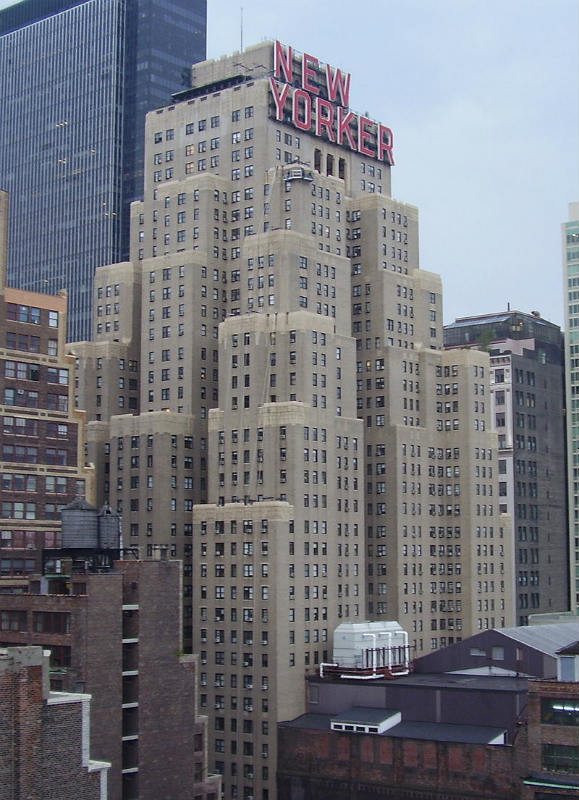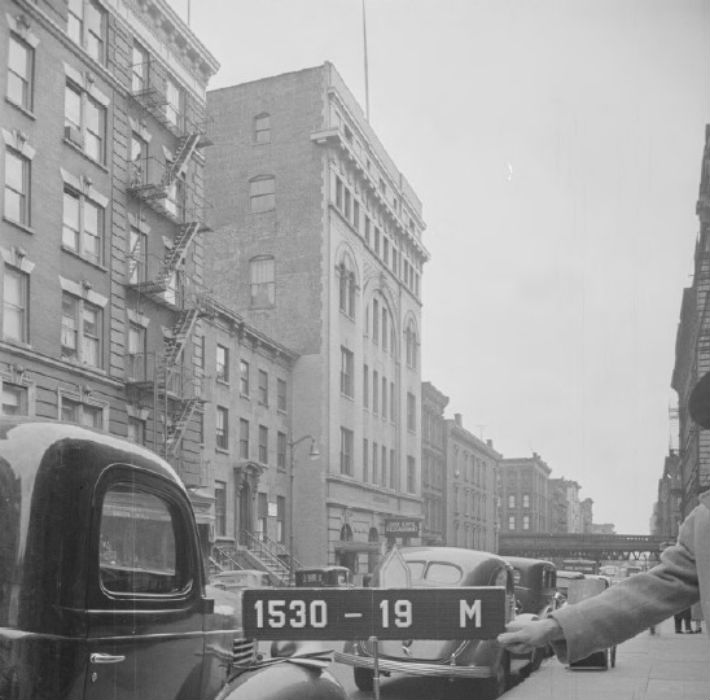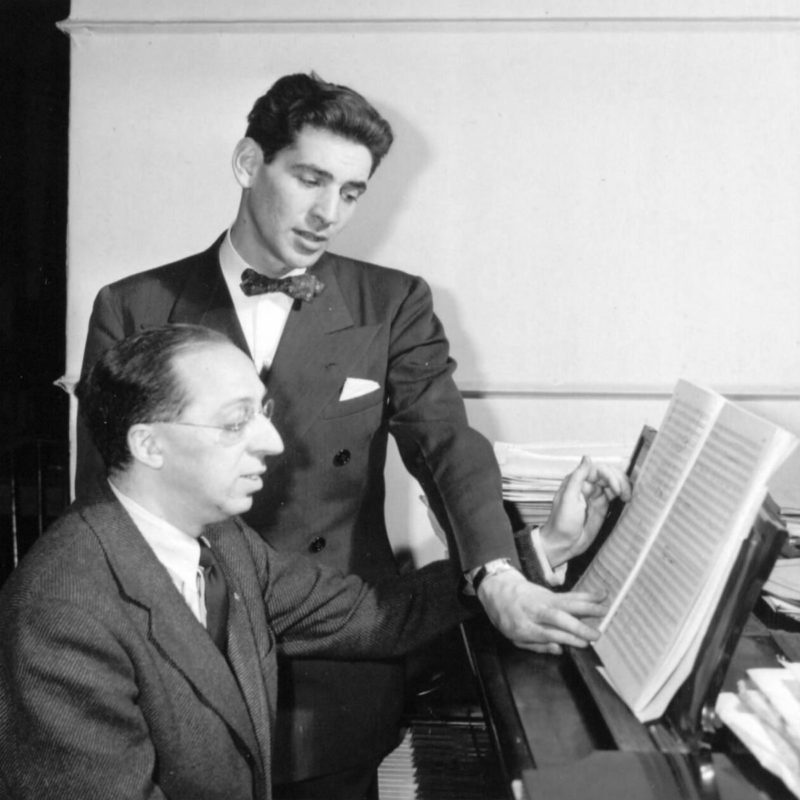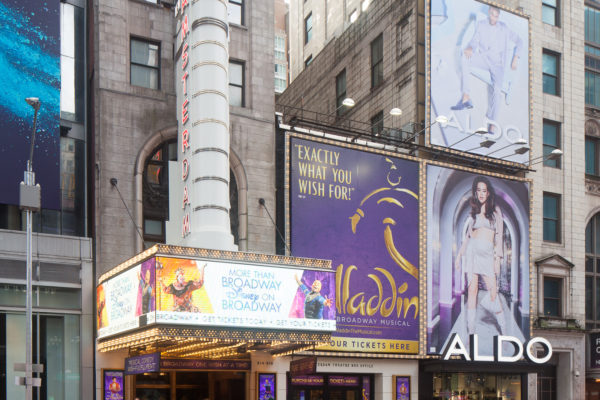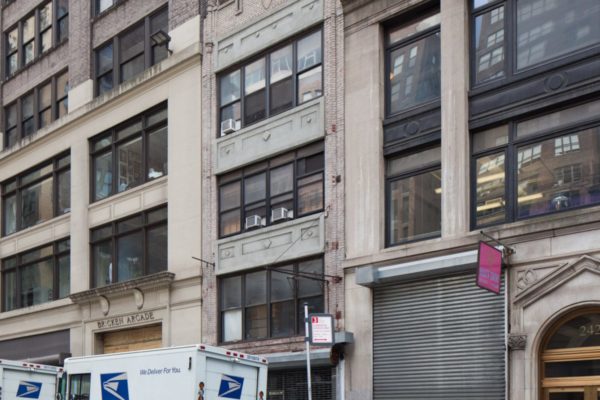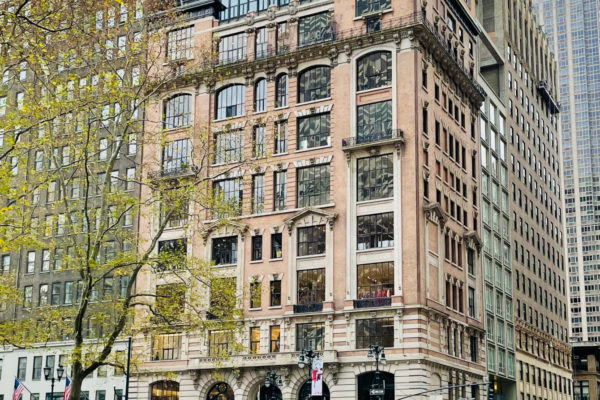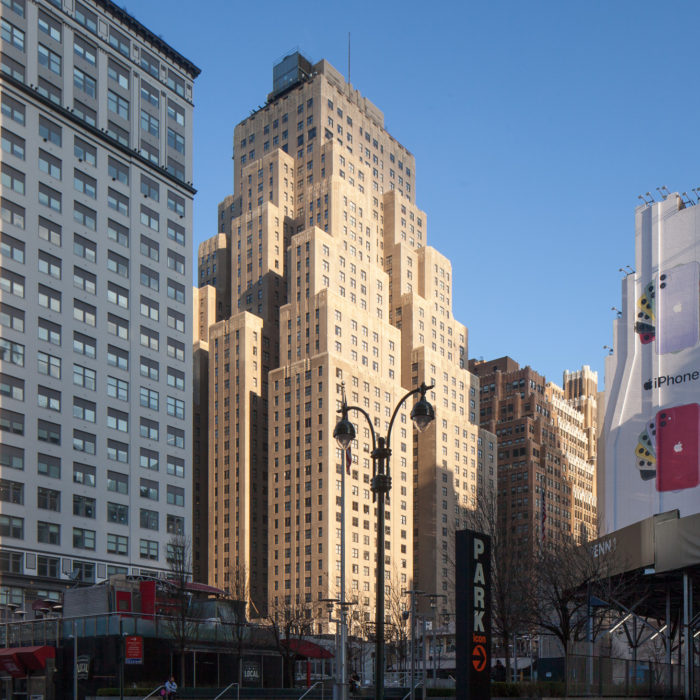
Magnus Hirschfeld at the Hotel New Yorker
overview
Considered one of the first, great pioneers of LGBT rights in the early 20th century, German-Jewish physician and sexologist, Magnus Hirschfeld, arrived in New York in November 1930 to begin a three-month lecture tour throughout the U.S.
For six weeks, he stayed at the recently opened Hotel New Yorker and delivered numerous lectures throughout the city that included extensive discussions on homosexuality.
On the Map
VIEW The Full MapHistory
On November 22, 1930, Magnus Hirschfeld (1868-1935) arrived via ocean liner in Brooklyn where he was greeted by a distinguished committee of medical practitioners and sociologists. He was in New York at the height of his career to begin a well-publicized lecture tour that billed him as “Germany’s Einstein of Sex.” As a gay man and a Jew living in Berlin, Hirschfeld had been the target of right-wing zealots and he suffered serious injuries from an attack in 1920.
Hirschfeld was an early and outspoken advocate of sexual minorities. He frequently mentioned Oscar Wilde to illustrate the “hell experienced by homosexuals”; Wilde was well known in Germany and his trials in 1895 had been extensively covered by the German press. Hirschfeld co-founded the Scientific Humanitarian Committee in 1897, which is considered the first group to advocate for homosexual and transgender rights. In 1913, Hirschfeld was one of the founders of the Medical Society for Sexual Science and Eugenics and the following year he published his study Homosexuality in Men and Women (1914). Five years later, in 1919, Hirschfeld opened the Institute for Sexual Science in Berlin, which was the first sexology institute in the world (in 1933, portions of the institute, library, and archives were destroyed by Nazi demonstrators). In 1928, he founded the World League for Sexual Reform with Havelock Ellis and Auguste-Henri Forel.
Upon arrival for his six-week trip to New York City in 1930, Hirschfeld stayed in a room on the 40th floor of the recently opened Hotel New Yorker, which was one of the largest and most technically advanced hotels in the world. When asked why he wanted to stay in the Art Deco-style skyscraper hotel, which was a new building type at the time, he stated, “Because towers reaching to heaven seem to me the very symbol of the America I love and of her high aspirations.” The trip was arranged, in part, by Dr. Harry Benjamin and his wife Gretchen. Benjamin first met Hirschfeld in Berlin and maintained a life-long friendship. During the trip, Benjamin and his wife hosted Hirschfeld at their 239 West 75th Street apartment for dinners and presentations.
While in New York, he spoke several times at the Labor Temple, 243 East 84th Street (demolished), as well as to both medical and psychoanalytic societies at the Pythian Temple, 175 West 70th Street; New York Academy of Medicine, 1216 Fifth Avenue; and the Newark Labor Lyceum in Newark, New Jersey. Hirschfeld presented his lectures in German, which were extensively reported on by the German-language New Yorker Volkszeitung (New York People’s Newspaper) and included accounts of his lectures on homosexuality.
During his New York visit, Hirschfeld met writers, artists, activists, doctors, and scientists, including Margaret Sanger, Langston Hughes, Carl Van Vechten, and attorney Clarence Darrow. Henry Gerber, founder of the Society for Human Rights in Chicago in 1924, was familiar with Hirschfeld, but it is not known if the two met in New York or Chicago. Hirschfeld also did fieldwork in Harlem, at bathhouses, and at night court.
Hirschfeld originally only intended to go as far as New York, but then extended his tour to include Detroit, Chicago, Los Angeles, and San Francisco, due to another wave of anti-Semitism in Germany. While in the U.S., he was advised to prolong the tour indefinitely and traveled to Japan, the Philippines, China, the Dutch East Indies, India, Egypt, and Palestine. Hirschfeld kept his private life out of public view without actually concealing it. He is known to have two life-partners, Karl Giese and Li Shiu Tong, who were named sole heirs to Hirschfeld’s estate.
Upon completion of his travels in 1932, Hirschfeld lived in exile and settled in Switzerland. In 1933, he relocated to France where he died in Nice on May 14th, 1935, his 67th birthday.
Entry by Ken Lustbader, project director (May 2018).
NOTE: Names above in bold indicate LGBT people.
Building Information
- Architect or Builder: Sugarman & Berger
- Year Built: 1928-29
Sources
A Doctor’s Travels,” The New York Times, May 12, 1935.
Aleksandra Djajic-Horváth, “Magnus Hirschfeld,” Encyclopædia Britannica, 2018 (accessed May 12, 2018), bit.ly/2wtICxl.
Dr. Hirschfeld, 67, Psychologist, Dies,” The New York Times, May 17, 1935.
Magnus Hirschfeld, translated by O.P. Green, Men and Women: The World Journey of a Sexologist (London: William Heinemann (Medical Books) Ltd., 1935).
Ralf Dose, translated by Edward H. Willis, Magnus Hirschfeld and the Origins of the Gay Liberation Movement (New York: Monthly Review Press 2014).
Ralf Dose, interview with Ken Lustbader, March 12, 2018.
Do you have more information about this site?
This project is enriched by your participation! Do you have your own images of this site? Or a story to share? Would you like to suggest a different historic site?
